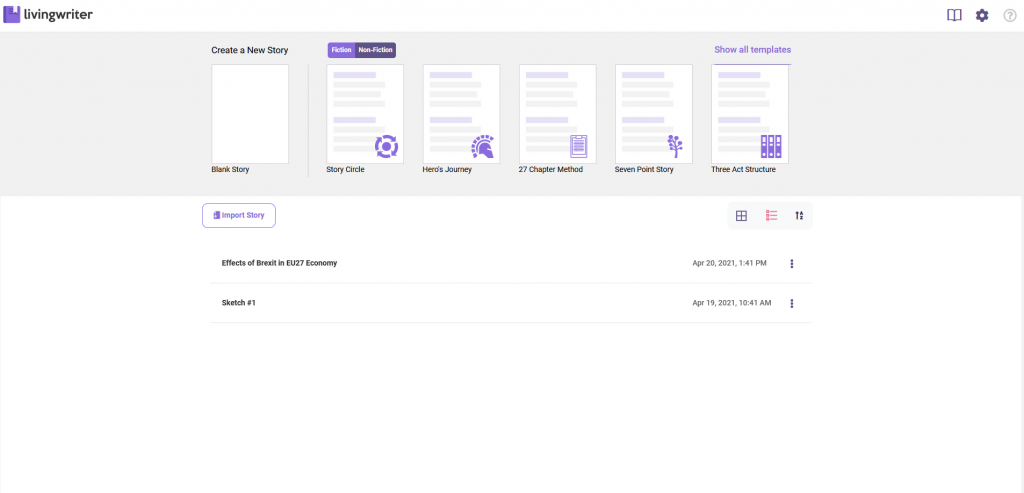The World of Chapbooks

While many book authors and short story writers are turning to digital printing and publishing, budding poets are growing their craft in the printing world through chapbooks.
Read below for everything there is to know about a chapbook and whether it’s right for you!
What Is A Chapbook?
A chapbook is a small poetry book made up of 20-40 pages. In the UK, a chapbook is referred to as a pamphlet.
Poems usually vary in length, so there is no pre-set number of poems per chapbook. Some chapbooks consist of long single poems but these are rare. Moreover, a minority of chapbooks are made up of short-form prose such as short stories.
In addition to being short, chapbooks are ideally saddle-stitched, meaning their pages are held together using staples along the spine. Their trim sizes usually vary, with the most common being a 6 x 9 inch format.
The poems in a chapbook are often interlinked thematically and they might be reinterpretations, odes, or elegies of mythology. For instance, Kaveh Akbar’s poems in his chapbook Portrait of the Alcoholic focus on the poet’s recovery from addiction.
The History of Chapbooks
Chapbooks originated in the 18th century, though they were not purely related to poetry in their early days. The contemporary chapbook traces its roots to the American Beat poets of the 1950s and 60s when chapbooks offered a means to publicize counterculture perception without commercial publishing presses. Though minor, these poetry pamphlets were powerful.
With the looming of the internet, writers found more creative ways to craft their modern chapbooks using PDF download formats or very small eBooks.
However, this does not mean that the old paper chapbooks have lost their edge. After all, the chapbook, which initially was related to self-publishing, is still held in high esteem in the literary world. Indie publishers and chapbook contestants are seemingly eager to find their next breakthrough in poetry. Due to its unique position in the poetic world, the chapbook is here to stay and far less likely to be replaced by any other forum.
Is Chapbook Publishing For You?
To answer this question, you must look at the pros and cons of publishing a chapbook.
Let’s start with the pros:
1. Build Your Name as a Poet
A chapbook is ideally a poet’s gold card- a respectable sample of their handy pieces. Poet Jackie Kay describes chapbooks as “a specialist’s version of a tantalizing starter.”
Chapbooks give the reader a taste of your voice, just enough to decide whether they want more or not. Chapbooks offer the perfect ground for new authors to enter the literary world.
Because it’s almost impossible to land a publishing deal for your first poetry collection, many poets launch their careers by sharing their work online, taking part in open mic nights, releasing a poetry chapbook, or submitting poetry to literary papers.
Chapbooks help establish your name and reputation as a great poet or author.
As long as your chapbooks get positive feedback, you stand high chances of having more of your work being published in the future. Poetry editors at publishing houses and presses are always on the lookout for new literary voices, so if your chapbook is a commercial success, it’ll give you an advantage when submitting your debut poetry collections to them. This could make you the next big thing in the literary industry.
2. Chapbooks Are Relatively Cheap to Make
Unlike novels, chapbooks are an incredibly low-cost option, particularly if you plan to self-publish. Most poets consider fairly inexpensive print-on-demand services or print small runs of not more than 150 copies.
Whichever option, you don’t incur upfront printing fees, so you can make your chapbook on a tight budget. The cost is even smaller because chapbooks are saddle-stitch bound.
Now to the cons, chapbook publishing only has one drawback:
- The Profit Margin is Pretty Slim
Because chapbooks are inexpensive to make, they are inexpensive to purchase, which reduces your chances of swimming in profits. Similarly, a small print run of 150 copies or less means you’re less likely to get a high-profit margin from your chapbook sales.
As a result, chapbooks are not made to make a profit but to develop one’s career as a poet.
Given the benefits and drawbacks of chapbook investment, you should only publish if:
- You accept the fact that a chapbook is not the means to a fat wallet but a sole investment for future success as a poet.
- You have a publisher who can take on the publication costs.
Examples of Chapbooks
Many of the current famous poets published limited editions of chapbooks in the early years of their careers. Below are a few examples:
- T.S. Eliot released each poem of The Four Quartets in single chapbook form before they were compiled into a book in 1943.
- The Spoils published by Basil Bunting in 1965.
- Animal Poems published by Ted Hughes in 1967.
- Memo for Spring published by Liz Lochhead in 1972.
- William and the Ex-Prime Minister published by Carol Ann Duffy in 1992.
LivingWriter is the best writing app not only for novels but chapbooks as well. With any writing template you choose, you can craft every poem in separate chapters, which will be all included under the single title of your chapbook.

If the idea of creating a chapbook appeals to you, head on to LivingWriter to start working on your debut.